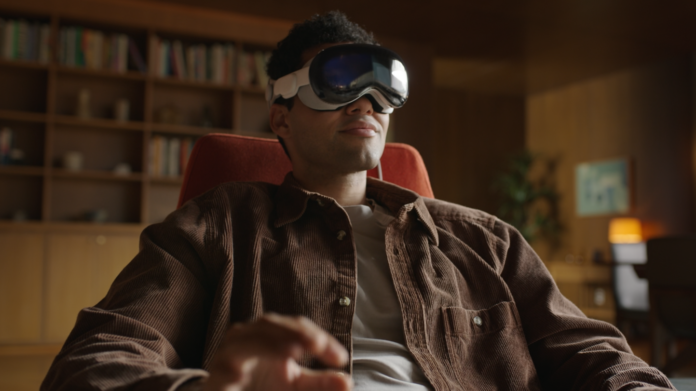Apple has finally unveiled its highly anticipated augmented reality (AR) headset, known as Apple Vision Pro. CEO Tim Cook described it as the first Apple product that users look through, rather than at. Priced at $3,499, the headset seamlessly blends the real and digital world, offering a unique AR experience. It is slated to launch early next year in the US, with availability in other countries to follow later.
Positioned primarily as an AR device, the Apple Vision Pro also features the capability to switch between augmented and full virtual reality using a dial. The headset is designed to be controller-free, utilizing eye, hand, and voice commands for interaction. Users can navigate through app icons using visionOS, the operating system specifically developed for the headset. Apple assures that hundreds of thousands of familiar iPhone and iPad apps will seamlessly adapt to the new interface.
The headset boasts an impressive array of features. It includes downward-facing cameras that can track hand movements, even if they are positioned low on the user’s body. With a glass front and an aluminum frame, the Apple Vision Pro incorporates five sensors, 12 cameras, and a 4K display for each eye. The device’s computer, equipped with a cooling fan, is housed within the headset frame. Apple has designed a comfortable modular mask called the “Light Seal” and a ribbed “Head Band” that can be adjusted to fit various face shapes and head sizes.
To accommodate users who wear glasses, Apple has collaborated with Zeiss to create custom optical inserts that magnetically attach to the headset lenses. The external battery provides up to two hours of usage and can be conveniently connected via a woven cable or external power source for extended sessions. Apple promises an unprecedented level of visual quality, with the ability to deliver sharp 4K video.
The Apple Vision Pro aims to provide an immersive experience while maintaining a connection with the real world. Through the EyeSight system, the user’s eyes are displayed to create a sense of presence. In full VR mode, the headset obscures the eyes with a glowing screen to indicate the user’s unavailability. The device scans the user’s face to generate a hyperrealistic digital persona. Utilizing passthrough video, the headset allows users to view the real world in full color while seamlessly projecting 3D objects into their surroundings.
The Apple Vision Pro also offers unique features for communication and entertainment. Spatial audio enables users to arrange FaceTime participants as “video tiles” around the room, enhancing the remote interaction experience. Additionally, users can capture and relive 180-degree videos using the built-in 3D camera while wearing the headset. Apple has also highlighted its plans to provide TV and Arcade content on the device, including premium offerings from Disney.
While the Apple Vision Pro has faced numerous delays over the years, it is poised to make a significant impact in the AR market. With its innovative features and Tim Cook’s personal involvement, industry insiders have shown enthusiasm for the headset. Although Meta, with its Quest 2 and Quest Pro headsets, remains a formidable competitor, Apple aims to redefine the AR landscape with its revolutionary offering.

